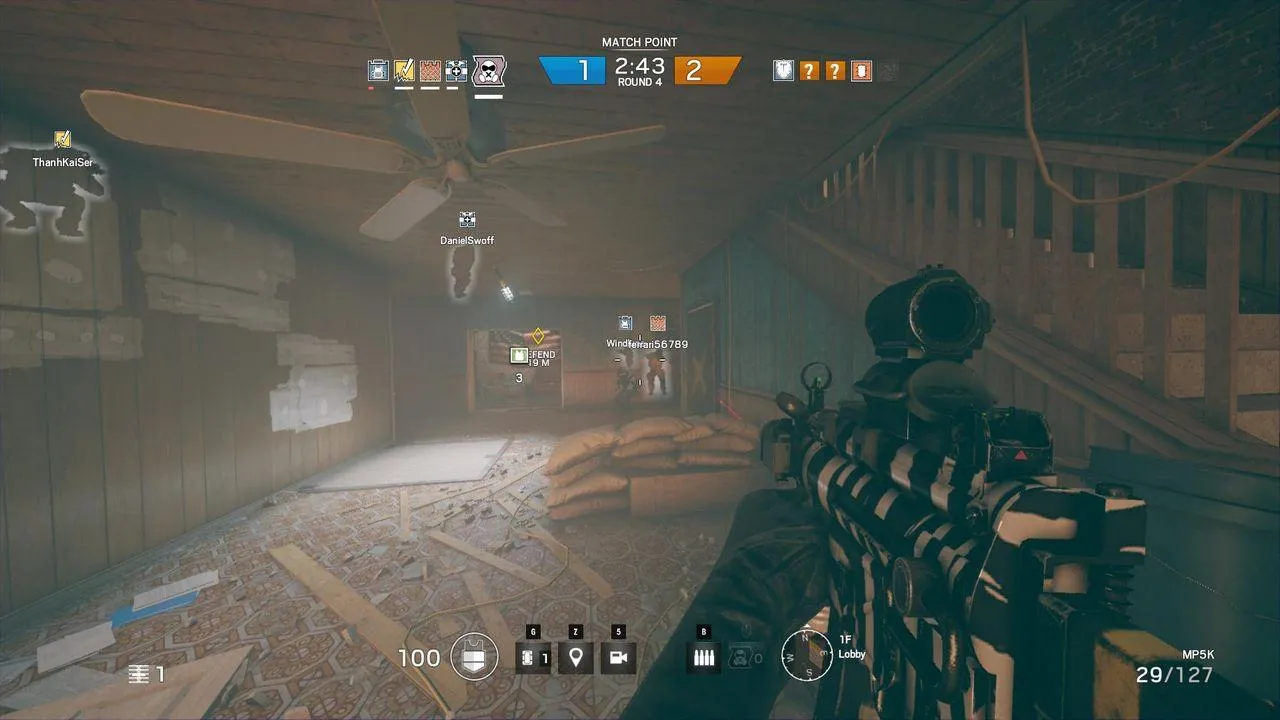
Rainbow Six Siege: A Deep Dive into Tactical Gameplay
Rainbow Six Siege has carved a unique niche in the increasingly crowded competitive gaming market. This is no small feat, especially for Ubisoft, a company that faced challenges in the years leading up to Siege’s release. Following a period of highly anticipated titles that fell short of expectations, Ubisoft surprised many with this tactical shooter, marking their first foray into a competitive arena dominated by established giants like Valve and Blizzard. This was especially bold considering Ubisoft’s historically shaky online infrastructure. Born from the ashes of the cancelled Rainbow Six Patriots project, Siege represented a significant gamble. Did it pay off? Let’s explore.
Addictive Gameplay
Rainbow Six Siege boasts some of the most addictive gameplay in the competitive team-based shooter genre. Two key factors contribute to this: the dynamic attack/defense mechanics and the ingenious operator system. Many team-based shooters have fallen into the trap of mimicking Counter-Strike or adopting MOBA-like elements, often neglecting the core principle of contrasting team play. Ubisoft recognized this gap and capitalized on it with Siege.
The game’s core loop revolves around the contrasting objectives of the attacking and defending teams. Attackers must meticulously probe defenses, identify entry points, and plan their approach. Defenders, conversely, must utilize gadgets, operator abilities, and the environment to fortify their position and hold the line. Even small changes in team composition, attack strategy, or defensive setup can drastically alter the flow of a match. This dynamic creates a seemingly endless stream of emergent gameplay, limited only by the players’ creativity and strategic thinking.
 alt text: Attackers breaching a fortified position in Rainbow Six Siege
alt text: Attackers breaching a fortified position in Rainbow Six Siege
Siege streamlines complex controls often found in tactical shooters, making it accessible to newcomers while retaining depth. Instead of overwhelming players with intricate mechanics, the game assigns specialized roles to its diverse cast of operators. With 20 operators from five different counter-terrorism units, each boasting unique gadgets, abilities, speeds, and armor ratings, players can experiment with various team compositions. These operators are categorized into Pointman, Breacher, Trapper, Blocker, and Support roles, creating a synergistic system that allows for complex strategies without sacrificing accessibility.
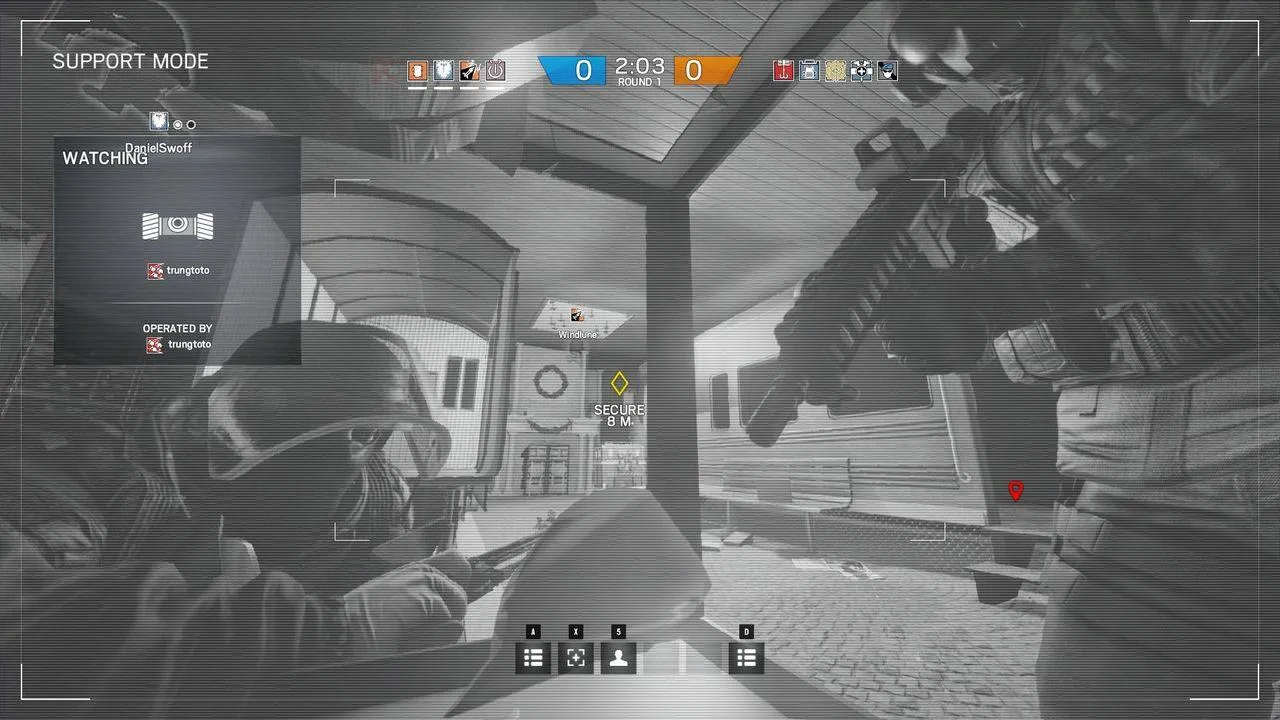 alt text: Defenders setting up traps and fortifications in Rainbow Six Siege
alt text: Defenders setting up traps and fortifications in Rainbow Six Siege
Further depth emerges from utilizing operators outside their intended roles. While limited by their loadouts, each operator possesses unique physical characteristics that allow for flexible playstyles. For example, the support operator IQ, typically used for mid-to-long-range support, can become a formidable attacker in the right hands.
The four-minute round timer injects urgency into every match, placing significant pressure on the attacking team to complete their objective. This time constraint forces attackers to apply constant pressure on the defenders, creating tense standoffs where even the most fortified defenses can crumble under a coordinated assault. This is where Siege’s dynamic gameplay truly shines, rewarding quick thinking, strategic adaptability, and clutch plays.
Outstanding Map Design
Rainbow Six Siege’s meticulously crafted maps are integral to its dynamic gameplay. From navigating the cramped confines of a hijacked plane to securing a festive Christmas market, each map offers a unique and engaging experience. The level design goes beyond aesthetics, incorporating intricate tactical layouts that encourage creative approaches. Each map presents a complex puzzle, with countless solutions depending on the players’ strategies.
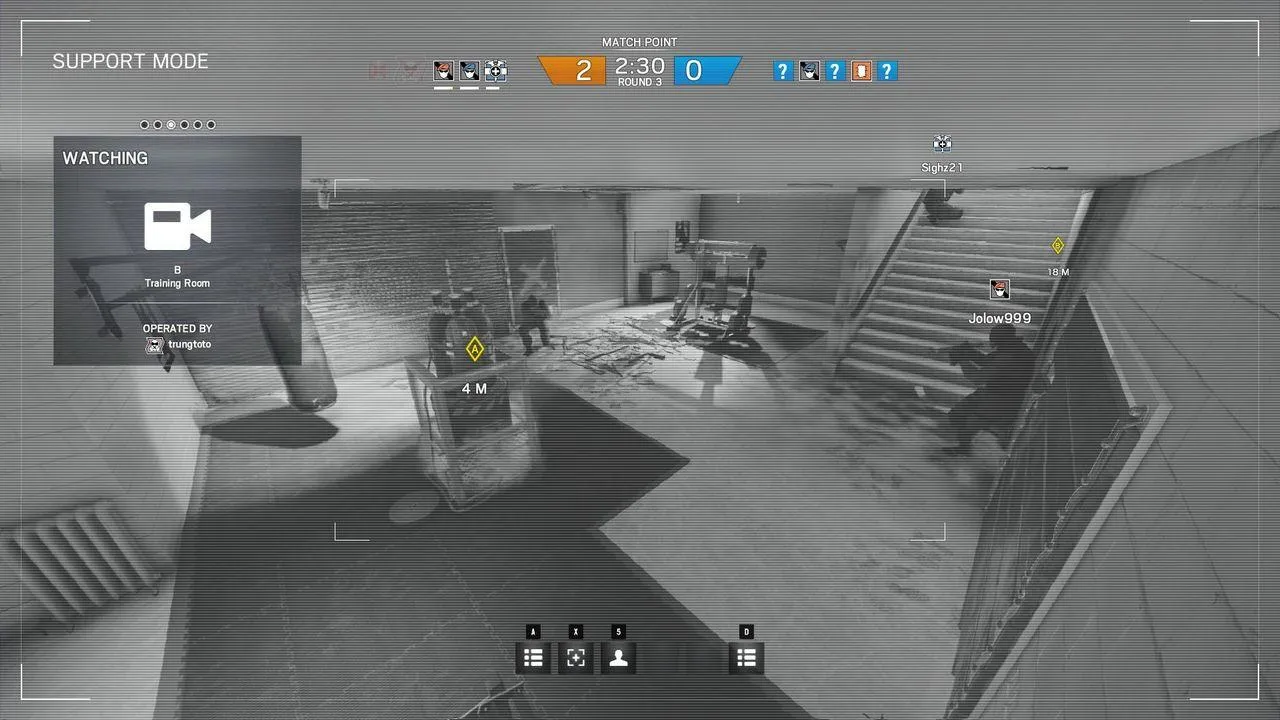 alt text: An intense firefight within a building in Rainbow Six Siege
alt text: An intense firefight within a building in Rainbow Six Siege
The game’s destructible environments add another layer of complexity. Unlike other shooters, Siege focuses on micro-destruction, allowing players to create small peepholes with handguns or blast open entire walls with explosives. This granular destruction not only enhances the tactical depth but also introduces an element of unpredictability, making each encounter unique.
The environmental systems further amplify the tactical possibilities. The dynamic lighting system, for instance, creates realistic light and shadow play, impacting visibility and creating advantages for both attackers and defenders depending on the time of day. Weather effects, like the blizzard mode, add further complexity by limiting visibility and distorting sound.
Network Issues and Other Shortcomings
Despite its strengths, Rainbow Six Siege has been plagued by network problems, a recurring issue for Ubisoft’s online games. While improvements have been made since launch, the online experience remains inconsistent. Issues like disconnections, lag, and the infamous “one-shot deaths” caused by low tick rate persist, impacting the competitive integrity of the game.
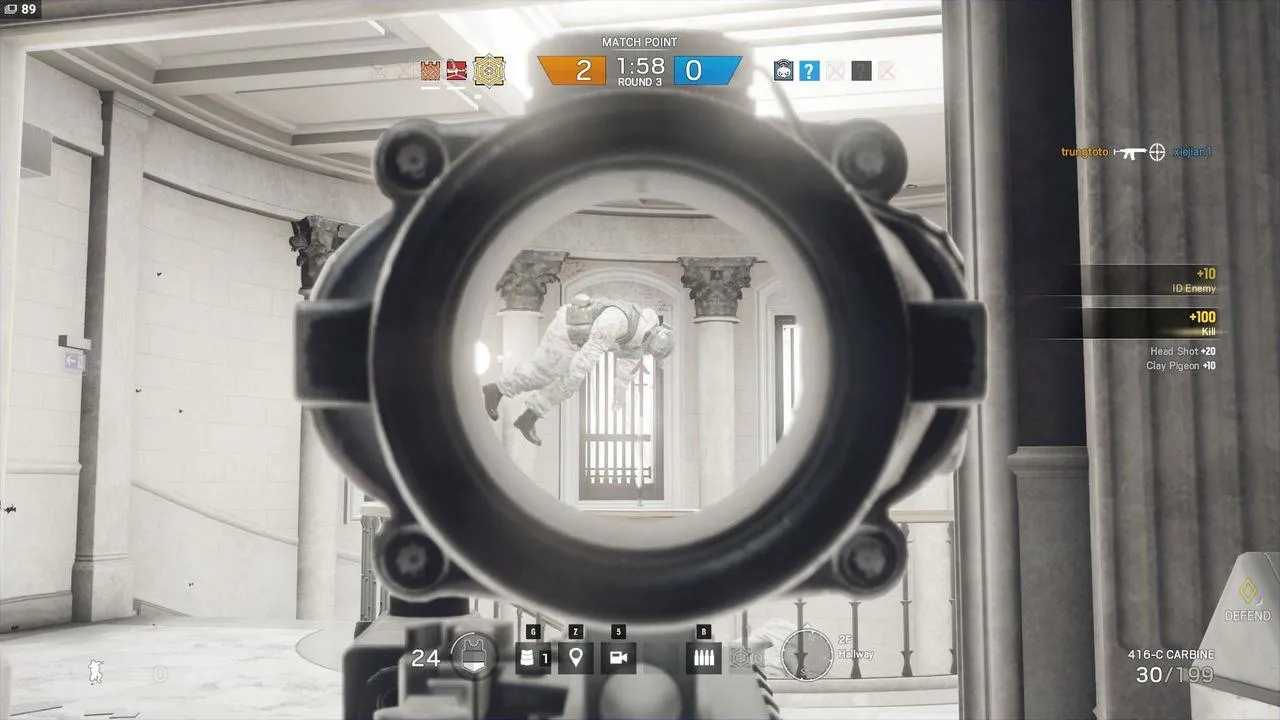 alt text: Operators facing off in a close-quarters engagement in Rainbow Six Siege
alt text: Operators facing off in a close-quarters engagement in Rainbow Six Siege
Beyond network woes, Siege suffers from baffling omissions. The lack of a robust in-game friend and team management system, along with the absence of proper communication channels, hinders both solo and team play. Players are forced to rely on external platforms for communication and team organization.
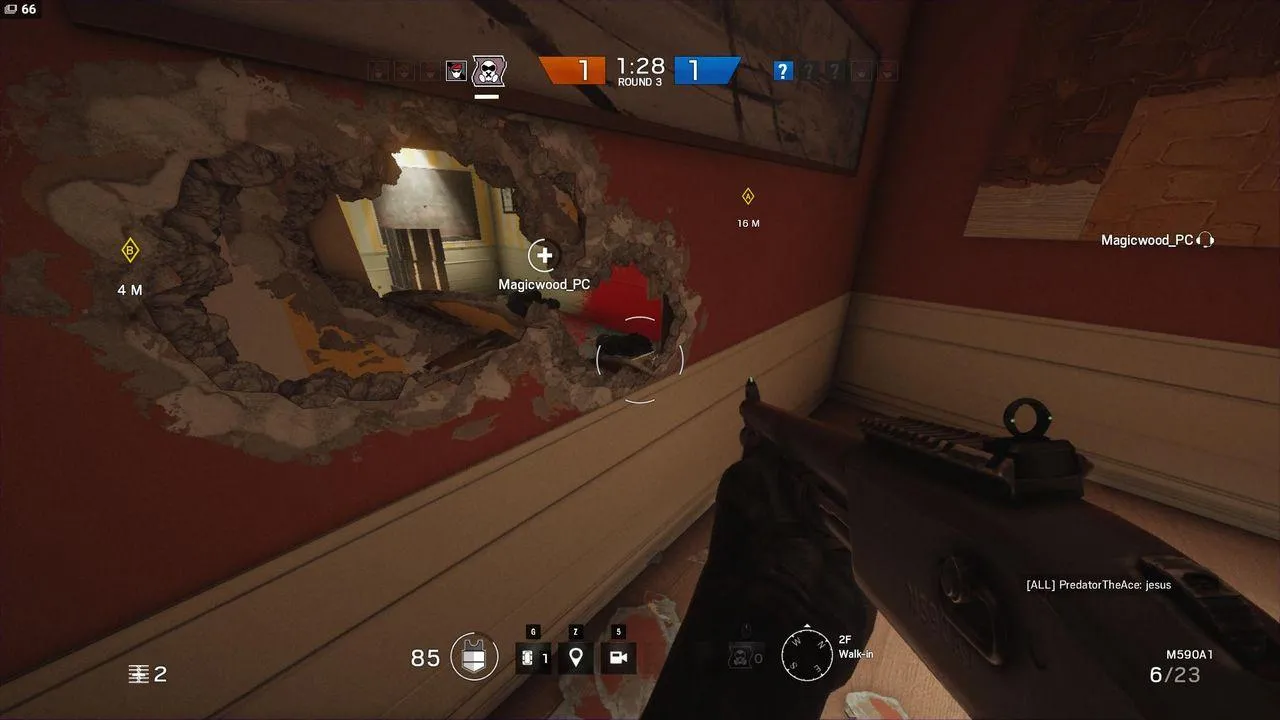 alt text: Players navigating a tight corridor in Rainbow Six Siege
alt text: Players navigating a tight corridor in Rainbow Six Siege
While the game features a tactical planning tool with detailed map layouts, it’s inexplicably relegated to Ubisoft’s website, hidden away from the game itself. Similarly, detailed player statistics and performance tracking are also absent within the game client.
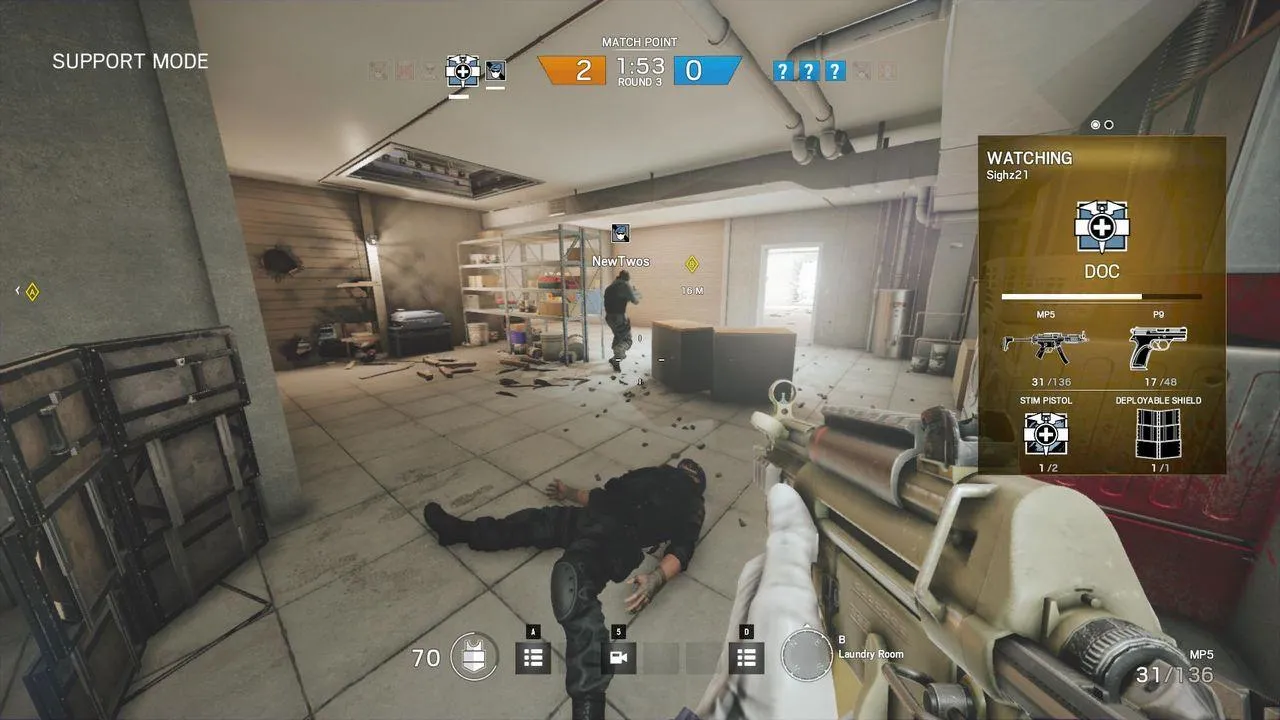 alt text: A player aiming down their sights in Rainbow Six Siege
alt text: A player aiming down their sights in Rainbow Six Siege
Conclusion
Rainbow Six Siege offers a unique and addictive tactical shooter experience. Its dynamic gameplay, intricate maps, and diverse operator roster combine to create a compelling competitive experience. However, persistent network issues and puzzling design choices hold it back from reaching its full potential. Despite these flaws, Siege remains a compelling tactical shooter that has carved out its own space in the competitive gaming landscape.





Comments (0)